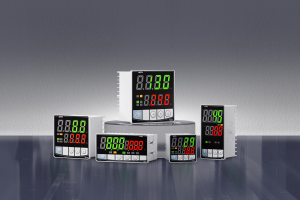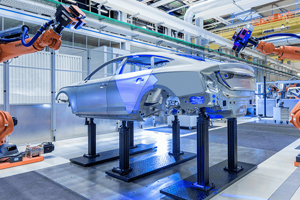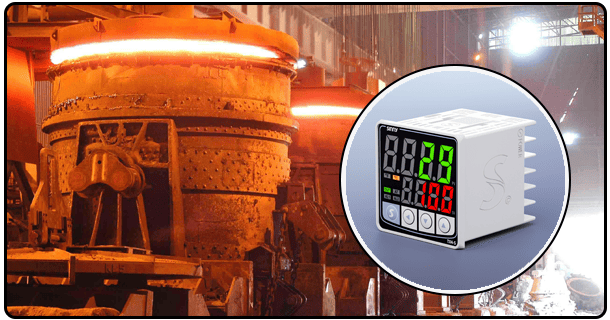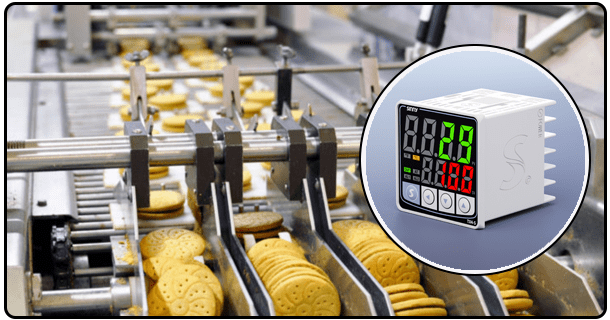The Principles and Applications of PID Temperature Control"
Discover the principles and workings of PID temperature control systems: Learn about their components, applications, and principles in both industrial and household systems. Discover why PID temperature controllers are essential to precision.
1. The following is a brief introduction to the topic:
The article discusses PID controllers and their components and principles, explaining why they're so important in the world of advanced automation systems and automated processes.
2. What is PID temperature controller?
The PID controller uses feedback to maintain and regulate a temperature. PID stands for proportional, integral, and derivative, the three main control actions which form its algorithm. A PID controller achieves the setpoint with minimum error by continuously monitoring and adjusting a process variable, such as temperature.
In an industrial furnace for example, the PID controller will monitor the temperature and regulate the output of heat to keep the conditions desired. PID controllers are more effective than traditional controllers in dynamic environments because they can predict changes and reduce overshooting.
3. Components in a PID temperature controller
Three main components make up a typical PID Temperature Controller:
Sensors : These devices provide feedback to controllers by measuring the temperature. Thermocouples (thermocouples) and resistance temperature detectors (RTDs) are examples.
Control Unit : The brain of the device, it is where the PID algorithms processes feedback to determine the corrective actions. The controller unit compares the temperature measured to the setpoint, and then calculates how much output is needed to close the gap.
Actuators : The actuators implement the output of the controller by adjusting a variable. This is often the case in temperature control applications.
These components work together to form a closed loop system which continuously maintains the temperature desired.
4. What is the PID temperature controller?
The working of a PID temperature controller revolves around its three control actions--Proportional, Integral, and Derivative. The three control actions are used in conjunction to ensure precise temperature regulation.
Proportional (P), The proportional expression provides an output proportional to current error (difference in the setpoint between the process variable and the setpoint). If the setpoint is lower, for example, than the actual temperature, then the proportional terms increases the output in order to get the temperature to the desired level.
Integral (I): This term refers to the total error. This ensures any error at steady state is removed, making it easier to maintain the set point.
Derived (D) : This derivative predicts errors in the future based on changes to the process variables. This term helps to dampen oscillations, and it prevents overshooting.
Combining these terms, a typical PID control generates an output which continuously adjusts to changing circumstances. In a chemical reaction, for example, a temperature PID controller will ensure that the temperature of the reaction remains constant, even if external factors change.
5. The advantages of using PID temperature controllers
The PID controller offers several benefits that makes it the best choice to regulate temperature.
High precision PID controllers are able to achieve an exceptional level of accuracy and can be used for medical devices, laboratory instruments, and other sensitive equipment.
Dynamic adaptability: These tools can respond quickly to changes in process variables, providing stability in dynamic environments.
Energy Efficient By minimising overshooting, oscillations and other errors in the PID controllers' outputs and operation costs are reduced.
Versatility PID temperature controls can be applied to a variety of different applications, ranging from household appliances to industrial machines.
6. PID Temperature Controls: Applications
The PID temperature control is widely used in many industries, applications and sectors.
Medical equipment: Devices such as incubators and sterilizers depend on PID temperature controllers to maintain precise temperatures.
Food and Beverage Industry PID controllers used to maintain quality in the food and beverage industry.
7. The Challenges of Limitations
The PID controllers are not without their challenges.
Tuning : Finding the best values for integral, proportional and derivative terms is a complex process that can take a lot of time.
Stability Improper tuning may lead to oscillations and sluggish performances.
Complexity PID controllers are complex and require an understanding of system dynamics that may not be possible for some users.
- The Temperature Process Control Guide Using PID
- The Temperature PID Control Tutorial - Setup, Tuning and Applications























